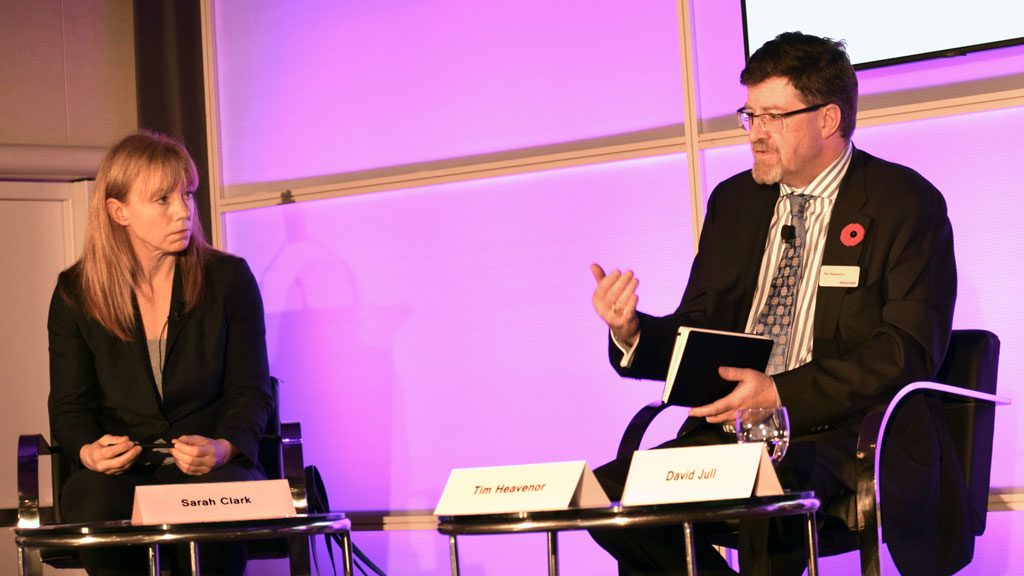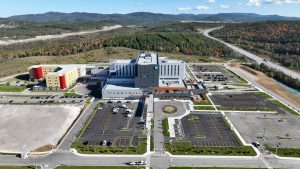As public-private partnership (P3) projects get bigger and more complex, owners must be prepared to relax requirements on risk transfer and ought to be willing to spend more time on the collaboration process, recommends a panel of experts.
The three panellists discussed contractor perspectives on evolving the “made in Canada” P3 model at the 26th Annual Canadian Council for Public-Private Partnerships national conference in Toronto.
They identified a litany of concerns including vague language in contracts, owners who want innovation but still rely on price to award contracts, and long maintenance periods that leave no flexibility for revamping contract terms.
Panellist Tim Heavenor, chief financial officer at Graham Group, said in an interview following the Nov. 5 session, that the time has come for the P3 model to evolve, with perhaps more elements of Integrated Project Delivery (IPD), where owners stay involved in project development a lot longer and with a greater focus on quality versus price.
That third ‘P’ is crucial. We really need to refocus on that
— Douglas Sanders
Borden Ladner Gervais LLP
“If you just go for the lowest prices all the time, you sometimes end up with a team that might not have understood what the owner wanted. If they lose money, there will be change orders and additional costs that they will be looking for the owner to pick up,” said Heavenor. “And, at the end of the day, the owner might find they have paid more having gone with the low price model, than if they had done a more rigorous job upfront of picking the most qualified team for their project.”
Douglas Sanders, partner, public-private infrastructure projects group, with Borden Ladner Gervais LLP, also made the case that owners need to stay more involved throughout project execution.
“That third ‘P’ is sometimes meaningless,” he said, referring to “partnership.”
“Both sides have the goal to get to the end of a project. That third ‘P’ is crucial. We really need to refocus on that. During procurement we need to have a real conversation on what the risks may be.”
Heavenor said contractors today are more often willing to speak out against the practices of owners that continue to try shift all of the risk to the project team even in complex projects such as large transit builds.
“There is a great deal more willingness to discuss the fact that they have lost money on contract performances,” he said.
“It is not sustainable for us to accept losses on projects for extended periods of time.”
Heavenor offered the “fit for purpose” clause in a P3 as an example of how owners attempt to pass on risk. It is used when an owner tells the a project team that a program needs to fit into a facility but, he said, they are avoiding describing exactly what the facility is going to look like.
He noted panel moderator Sarah Clark, president and CEO of Fraser River Pile and Dredge (GP) Inc., had called the process “lazy” on the part of owners.
“That puts us at a great deal of risk,” said Heavenor. “You get to the end of the project and have spent a great deal of money on it and someone says, ‘well that is not really fit for our purpose,’ and now you have a cost you are responsible for.
“What we would like to do, you discuss with the owner during the process, here’s the solution, and you proceed with that design, and they are getting what they know they want.”
Heavenor suggested the collaboration period could continue 12 or 18 months into project execution — similar to the IPD model.
But David Jull, executive vice-president, transportation for WSP Canada, said that would pose a problem with scheduling.
“What if in a year-and-a-half you can’t reach agreement?” asked Jull.
Perhaps the parties could “meet somewhere in the middle” as they attempt to develop a procurement model that incorporates greater certainty into the project specifications, has better price certainty and still encourages innovation, he said.
Another issue the panellists identified was management capacity within owners. It’s commonly understood that contractors working in busy times have recruiting challenges for managers and labourers but it’s less recognized to be the case for owners.
Heavenor said as the P3 sector expands, the lack of experience amidst frequent turnover among owners represents another reason why owners are having trouble fulfilling their roles in P3s.
“At an organizational level, it’s a challenge to get the right people on both sides of a project,” added Sanders.




Recent Comments
comments for this post are closed